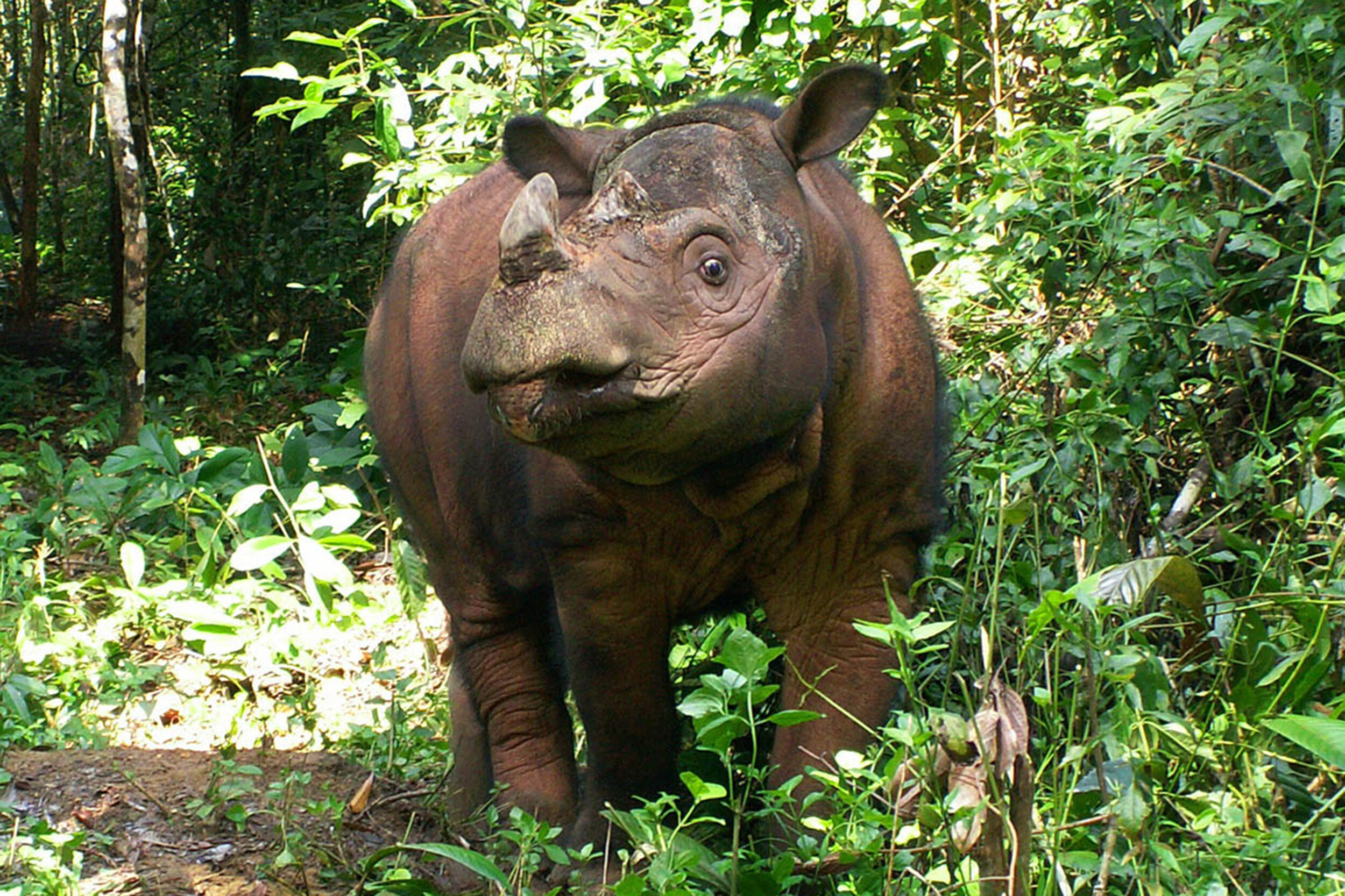Teams Overcome 2020 Delays to Prepare For Upcoming Captures
Pictured is Andalas is a Sumatran rhino in care at the Sumatran Rhino Sanctuary in Indonesia’s Way Kambas National Park. Photo Credit: International Rhino Foundaion
Despite a halt in global travel, Sumatran Rhino Rescue has been moving forward in preparations for the next Sumatran rhino captures and translocations with information sharing and capacity building with rhino experts from around the world.
In dense, steamy rainforests on the Indonesian islands of Sumatra and Borneo, Earth’s few remaining Sumatran rhinos are struggling to exist. Barely hanging on in fragmented sub-populations, this rhino is so rare – fewer than 80 survive – that only a handful of people have ever seen one in the wild. The decline of the species was initially caused by habitat loss and poaching for their horns – threats that still persist today
Rhino experts from around the world and Indonesian government officials agree that the only way to bring the Sumatran rhino back from the brink is to relocate them to managed breeding facilities designed specifically for their care and propagation.
Surveys are currently underway to determine the location of individual rhinos and plan for their capture. The next step is to prepare for the rhino capture and that takes coordination. The capture team coordinates with the transport team and with the location receiving the rhinos so that everyone is prepared and the entire process can happen as quickly and smoothly as possible.
Sumatran Rhino Rescue alliance members tasked the International Rhino Foundation (IRF) with preparing the training programs for the veterinary teams and other personnel to prepare for captures that may begin in early 2021.
Vets from across Indonesia, as well as experts from around the world, convened in January of this year for an experience sharing event at the Sumatran Rhino Sanctuary (SRS) in Way Kambas National Park led by Dr. Markus Hofmeyr, who will lead the training program, with support from veterinarians from five other global institutions.
During the experience sharing event, Dr. Hofmeyr discussed his extensive experience in capturing and translocating rhinos in Africa. Best practices were shared amongst the group with the opportunity to ask questions.
Plans called for holding additional trainings throughout 2020, but the global pandemic halted travel and delayed operations in Indonesia. The teams moved to virtual learning sessions where topics such as the safest way to immobilize a rhino were discussed. These education sessions are designed to build capacity at the local level, equipping local vets with additional knowledge and ensuring that captures will go smoothly when they commence.
Information sharing is also key to the project. Personnel, including keepers and veterinarians, from the future sanctuary in Aceh in northern Sumatra have been given the opportunity to travel to the Way Kambas SRS, pending COVID-19 testing. There they will embed themselves for several months living, working, and learning from their colleagues, who have been expertly caring for Sumatran rhinos for 25 years.
In-person training is tentatively slated to resume in early 2021 pending any new COVID-19 restrictions. Even though COVID-19 slowed down the schedule, the vet teams are doing all that they can to prepare for the capture and translocation of rhinos into critical conservation breeding programs designed to reduce the decline and save the species from extinction.

